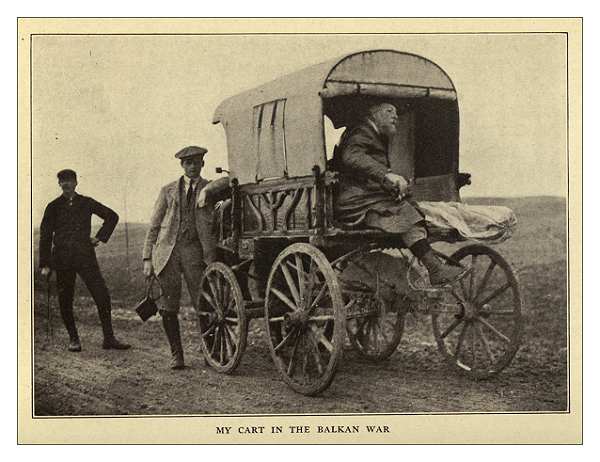

an Old Campaigner Goes to War for the Last Time
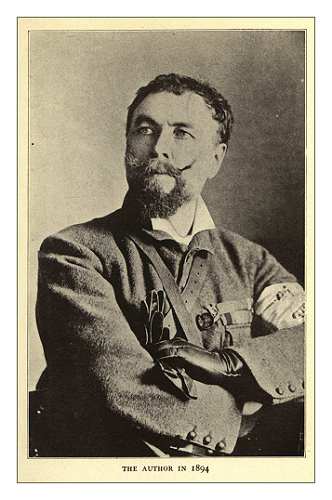
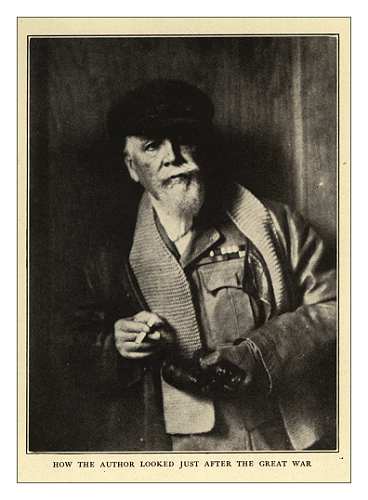
Frederic VIlliers in 1894 (left) and in 1919 (right)
Frederic Villiers was a veteran at covering wars at first hand. Holding 12 war decorations and campaign medals he was present as reporter during most major conflicts since 1879 : in Afghanistan, Tel-el-Kebir, with the Japanese army in China in 1894, with Lord Kitchener at Omdurman in the Sudan in 1898, with British forces during the Boer War, at Port Arthur in 1905 during the Russo-Japanese War, in the various Balkan Wars and others. He started his career as war-journalist and illustrator in 1871 when still an art student, he went to Paris to gather material for a panorama of the Franco-Prussian War, then in its last-throes. Soon afterwards he was employed by 'the Graphic' and sent out on various missions to wherever a war was going on. His war sketches were known to newspaper and magazine readers throughout the world, especially those of pre-Great War days, when it was customary to print hand drawn illustrations of news events rather than photographs. He is also credited with taking the first successful motion pictures of warfare. Among his published books are such titles as : "Pictures of Many Wars," "Peaceful Personalities and Warriors Bolds," "Port Arthur : Three Months with the Besiegers,"and "Villiers: His Five Decades of Adventure",
Even though the printing of photographs had become more common by 1914, editors and readers alike still expected to see carefully composed and daring battle scenes, with heroic charges, gallant soldiers and deeds of daring and pluck. Such scenes were hard if not impossible to capture on photograph, so the need for sketch artists and illustrators was still great. Most illustrators were not all that keen on going into the field and accompanying armies on the march and could not have properly completed their illustraions in such circumstances in the first place anyway. Those who did, such as Frederic Villiers and H.C. Seppings-Wright, became famous media figures, their illustrations often published in two-page spreads in leading news magazines and reprinted in many countries world-wide.
In 1914 Villiers was employed by the 'Illustrated London News', one of the most prestidgious British news magazines. He and fellow collegue Seppings-Wright were sent to cover the war news on the continent. Whether by choice or on order of his employers, Villiers ended up following the British army in France while Seppings-Wright went to Belgium where he covered the siege of Antwerp and the retreat to the sea. Villiers, hampered by the strictness of the British military authorities at first did not have the opportunities to witness much action. Later in the war, by 1915 that changed and he was able to cover British and French engagements and battles almost at first hand, just behind the front-line trenches. After two years on the Western Front, Villiers went to Egypt and Mesopotamia in 1916 and spent a consideable time on the Northwest Frontier in British India covering tribal insurrections, but did not have much success in finding newsworthy subjects for his reporting that passed the censor's office. Afterwards he left war reporting and undertook a tour of the world, seeing the Great Wall of China in 1917 and visiting Hollywood among other destinations. He passed away in 1922 having completed his two-volume autobiography in 1920.
Frederic Villiers was one of the more famous British illustrators of his day and though relatively old in 1914, (63 years old) he produced many first-hand sketches and finished drawings of battle scenes and Allied soldiers in the trenches. Sometimes due to constraints of time and circumstances, his sketches would be sent in and finished into completed illustrations by other illustrators working in Great Britain. Several of his sketches turned into finished illustrations are to be seen in the links below. Artists such as Frederick d'Haenen, Michaels, R. Caton Woodville or Koekoeck among others would be chosen to finish Villiers' rough sketches into publishable works.
His own style is somewhat old-fashioned, even compared to many other Great War illustrators, but that is hardly surprising given that he started his reporting career in 1879, a time when illustrations were first rendered into wood cuts or metal etchings before being printed. His Great War work was of course reproduced as faithfully as was possible given the technology of the day, though it was done almost exclusively in grey tones, not in color.
The following links show a number of Frederic Villier's illustrations as taken from British magazines.
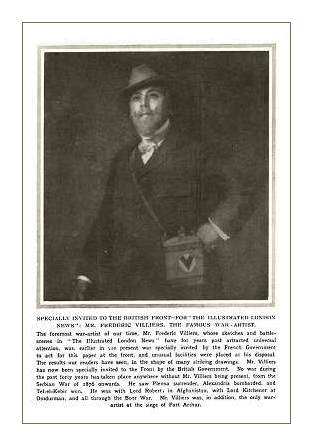

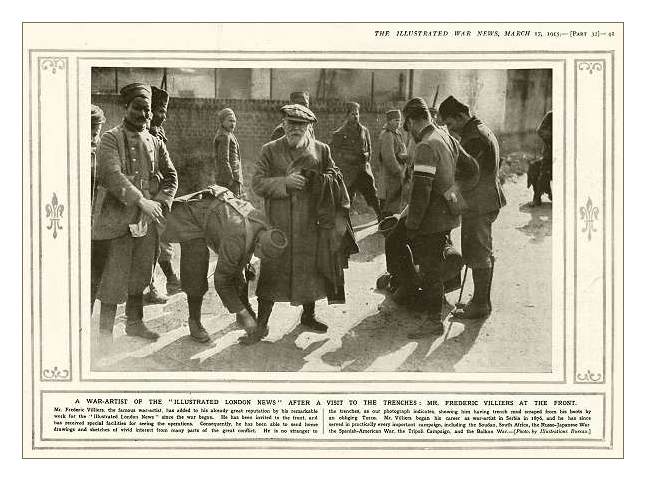
Frederic Villiers (center with beard) visits the French front in 1915 : from 'the Illustrated War News'
To a Chapter from his Autobiography
Frederic Villiers - a Chapter from his Autobiography
to a Gallery of Illustrations by Frederic Villiers

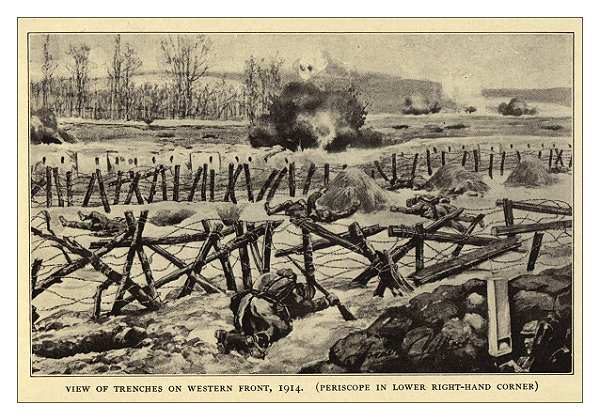
On the Western Front in 1914 - Villiers is looking through a periscope, bottom-right
